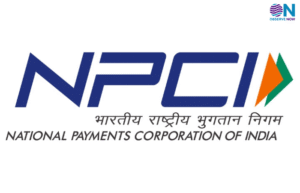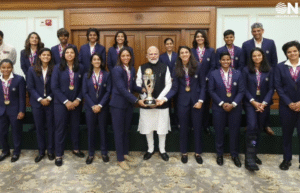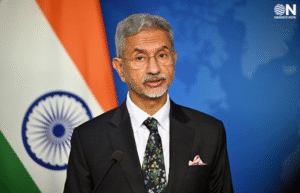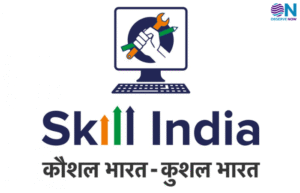New Delhi: In recent years, the Chennai Metropolitan Development Authority (CMDA) has spearheaded crucial initiatives aimed at bolstering infrastructure and augmenting the livability quotient of Chennai. Recognizing the pressing challenges posed by rapid urbanization and escalating population density, CMDA has embarked on an array of strategic projects and plans.
These endeavors encompass infrastructural enhancements, urban renewal projects, and sustainable development initiatives tailored to accommodate the burgeoning demands of the Chennai Metropolitan Area. By prioritizing innovation and foresight, CMDA is steadfastly committed to ensuring the city’s resilience and fostering a conducive environment for its residents amidst the dynamic urban landscape. In this regard Shivani Babbar, ObserveNow interacted with Anshul Mishra, IAS, Member Secretary, Chennai Metropolitan Development Authority.
Chennai Metropolitan Development Authority (CMDA) is the statutory development authority of Chennai. It was constituted as an ad-hoc body in 1972 and became a statutory body in 1974 vide the Tamil Nadu Town & Country Planning Act, 1971. Its jurisdiction was expanded from 1,189 sq. km. to 5,904 sq. km. in 2022 and is responsible for developing the Master Plans and carrying out related projects.
Here are a few excerpts from the interview:
Can you share some of the key development initiatives undertaken by CMDA in recent years to enhance the infrastructure and liveability of Chennai?
CMDA has implemented several significant development projects to enhance Chennai’s infrastructure and overall livability in recent years. These include the formulation of comprehensive Master Plans spanning different periods, with the current focus on the Third Master Plan covering 2027 to 2046. Additionally, CMDA has conducted over 22 studies, backed by funding from the World Bank, with their findings informing the upcoming Master Plan. Notably, the completion of 57 Detailed Development Plans (DDPs) and the ongoing preparation of six New Town Development Plans for satellite towns like Minjur and Thirumazhisai highlight efforts to expand urban areas sustainably. Moreover, CMDA has spearheaded the creation of large-scale public infrastructure projects such as the Chennai Mofussil Bus Terminus (CMBT) and Koyambedu Food & Grain Market, alongside numerous social infrastructure initiatives like playgrounds, community centers, and dialysis centers distributed across the city. Furthermore, the focus on blue-green infrastructure, including the development of parks, lakes, and beachfront areas, underscores a commitment to enhancing environmental sustainability. Collaboration with other departments is also evident in joint projects such as the Sports City at Semmancheri and the Island Grounds Project, reflecting a holistic approach to urban development.
What specific projects or plans are in place to address the growing urbanization and population density in the Chennai Metropolitan Area?
A combination of a multi-nuclei approach through the formation of 6 satellite towns/ growth centers, the multi-sectoral comprehensive Third Master Plan (TMP), and regional strategies have been integrated together to combat the growing urbanization and plan for the increased population and density.
The TNCDBR (Tamil Nadu Combined Development and Building Regulations) is being reviewed to promote affordable housing, sustainable development and meet the growing demands of the city.
Further, a TOD proposal is in the pipeline which emphasizes the need for compact city and transit-oriented communities. Towards this, 5 arterial roads, the Outer Ring Road and MRTS and Metro Corridors have been identified as Transit corridors or High-Density Corridors. A stratified increase in FSI has been proposed along these corridors and is currently under review. The policy and proposal together would aid in densifying people along major transit networks aiding in the encouragement of use of public transit, restricting urban sprawl and moving towards vertical development.
What role does CMDA play in collaborating with other government agencies and private stakeholders to promote sustainable urban development?
CMDA plays a pivotal role in fostering sustainable urban development by facilitating collaboration among various governmental bodies and private stakeholders. Acting as a liaison between different departments, stakeholders, private entities, and the public, CMDA ensures smooth coordination for sectoral studies and development projects, aligning with the objectives of the Third Master Plan. Stakeholder consultations are prioritized in all endeavors, exemplified by extensive consultations during the Visioning exercise for the Third Master Plan and public consultations for projects like the Sembakkam Lakefront Development. Furthermore, CMDA engages in collaborative projects with line departments, such as the Sports City initiative with SDAT and Social Infrastructure Development Projects with TNUHDB, as well as endeavors with academic institutions and NGOs through memorandums of understanding, fostering knowledge exchange, technical support, and research and development efforts. Moreover, CMDA secures funding for numerous projects spanning the Chennai Metropolitan Area, thereby facilitating comprehensive urban development initiatives.
With increasing concerns about environmental sustainability, what measures has CMDA taken to ensure that urban development in Chennai is eco-friendly and resilient to climate change?
Besides the blue green infrastructure projects, we are in the process of formulating a climate resilient action plan, and working with JICA on a flood control master plan for the Urbanised River basins of the Chennai Region. The TMP further explores the impact of Urban Heat Islands on the Metropolitan Area and the influence of open and green spaces on the urban livelihoods. Further, amendments are being made into the TNCDBR to incorporate the impacts of the climatic changes and promote resilience through introducing buffer zones, green TDR, etc.
What challenges does CMDA currently face in its mission to develop and manage the Chennai Metropolitan Area? How is the authority addressing these challenges?
CMDA is currently facing several challenges in its efforts to develop and oversee the Chennai Metropolitan Area. One significant obstacle is inter-departmental coordination, which it addresses by establishing review committees involving various stakeholder departments to ensure a comprehensive approach. Furthermore, the authority focuses on ensuring fairness and transparency in tender evaluations and awards through extensive reviews by planners and committees. Monitoring efforts involve periodic inspections and enforcement of regulations through an Enforcement Cell. Land management poses another challenge due to the scarcity of land; however, CMDA is employing new techniques like Land Pooling, with amendments made to the Land Pooling Act and drafting of rules. Additionally, the authority tackles the lack of awareness by disseminating information through social media platforms, using tools such as video clips, comic strips, and graphical content to simplify planning concepts for the general public. Finally, CMDA confronts the dynamic nature of site-specific issues and rapid urbanization as part of its ongoing challenges.
What is CMDA’s vision for the future of Chennai’s metropolitan development? Are there long-term goals or specific milestones that the authority aims to achieve in the coming years?
Efforts toward resilient development aim to enhance the general standard of living by embracing a holistic strategy encompassing environmental sustainability, economic advancement, and the implementation of innovative, technologically-driven initiatives. The vision for Chennai is to evolve into a “Megahydropolis,” a thriving coastal megacity in the years to come.

































